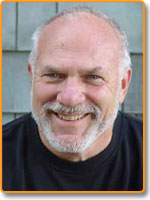I’ve been thinking about Tina, Sarah, slinkies, and how improv may improve your group’s productivity.
During the 2008 presidential campaign, I thought Tina Fey did a good Sarah Palin—so good that when the governor from Alaska joined the comedian on Saturday Night Live, it seemed as if Tina Palin and Sarah Fey were impersonating each other. A mesmerizing duo.
On my morning walks in the woods this week, I’ve been listening to the real Tina Fey read the Audible® version of her NY Times best-sellingBossypants.
Today’s recording resumed at: “The rules of improv that will change your life and reduce belly fat.” Unfortunately she whispered a retraction that improv will not reduce belly fat before listing the rules.
Tina got me laughing (out loud), no doubt upsetting passers by intent on soaking in the sounds of silence. She also got me thinking as she recalled life lessons learned while studying improv—the discipline of two or more actors, without scripts or props, making something happen.
“First rule,” says Tina: “Always agree, and say yes.”
When you are improv-ing, you must always agree with what your partner has created. So, if I say “Freeze, I have a gun,” and you say, “That’s not a gun; it’s your finger,” our improv scene has ground to a halt. But, if you say, “The gun I gave you for Christmas? You bastard.” then we have started a scene because we agree in fact that my finger is a Christmas gun.
We’ve all been in groups trying to make something good happen, beleaguered by some slinky who habitually disagrees and argues why each new idea is bad or can’t be done. (According to Urban Dictionary, a slinky is “a person who is generally worthless, but will bring a smile to your face if he gets pushed down the stairs.)
Anything but naïve, Tina acknowledges that we are not always going to agree with everything everyone says. I agree. If we did, one of us would not be necessary. But, the rule of agreement, she proposes, reminds us to respect what others create and to approach conversations and projects with open minds. “Start with a yes, and see where that takes you.” In other words, don’t be a Slinky.
“The second tenet of improv,” Tina says, “is to not only say yes, but yes,and….”
You are supposed to agree and then add something of your own. If I start a scene with, “I can’t believe it’s so hot in here,” and you just say, “Yeah,” we are kind of at a standstill. But if I say, “I can’t believe it’s so hot in here,” and you say, “Yes, this can’t be good for the wax figures,”—now we’re getting somewhere.
I found myself entering the conversation with, “No kidding. Quick, let’s snap a selfie with Palin over there before it’s too late.”
While some readers may appreciate my volley, others will groan. Which illustrates a line from Henri Matisse I saw posted at an art show over the weekend: “Creativity takes courage.”
Why let fear hold us back from contributing to the conversation, from offering our ideas? In fact, one might argue it’s our social responsibility to add something to our group’s discussions. Be courageous.
“The next rule,” says the comedian, “make statements. This is a positive way of saying, ‘Don’t ask questions all the time.’”
If we are in a scene and I say, “Who are you? Where are we? What are we doing here? What’s in that box?” I’m putting all the pressure on you to come up with all the answers. In other words, whatever the problem, be part of the solution. Instead of saying, “Where are we?” make a statement like, “Here we are in Spain, Dracula.”
Were Sarah in that sketch, I could imagine her questioning, “That’s not Russia out our window?”
To get things done or before ideas can be refined, someone has to start.
“The best rule,” Fey concludes, “there are no mistakes, only opportunities.”
If I start a scene I think is a cop riding a bicycle and you think I’m a hamster in a hamster wheel, guess what? Now I’m a hamster in a hamster wheel. I’m not going to stop everything to explain it was really supposed to be a bike. Who knows, maybe I’ll end up being a police hamster put on hamster wheel duty because I’m too much of a loose cannon to be in the field. Many of the world’s greatest accidents have been mistakes. I mean, look at the Reese’s Peanut Butter Cup.
Had Tina asked me to read a prepub of her book, I’d have suggested, “I mean, look at the Slinky.”[1] (That would be the toy, not the yoyo on the committee.)
Tina’s improv rules offer helpful clues for increasing group productivity, making things happen, enhancing conversations, and, every now and then, giving birth to some incredible out-of-the-blue ideas.
I’m tempted to ramble through other applications, but that would rob you of the pleasure of thinking about how Tina’s tips might bring life to those committee meetings, task forces, book clubs, and backyard barbecues where you find yourself.
Meanwhile, I’m thinking what a hoot it would be to run through these rubrics with Tina and Sarah over Saturday morning coffee? OK, Sunday afternoon hamburgers (I don’t like coffee).
What do you think?
Mark Neuenschwander aka Noosh
[1] In 1943, Richard James, was attempting to engineer a device with tension springs for monitoring horsepower on battleships. One of the springs accidentally fell to the floor and kept worming its way across the workshop and on into history to become, perhaps, my favorite childhood toy.
